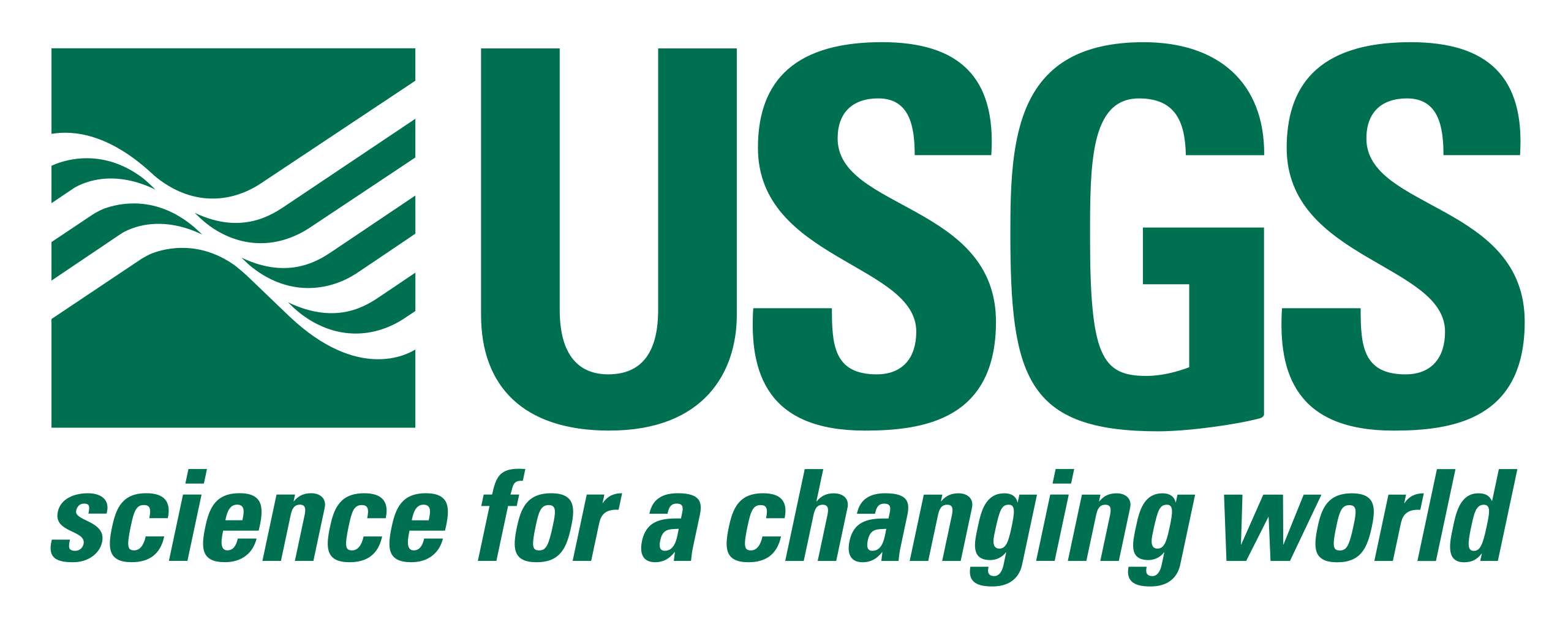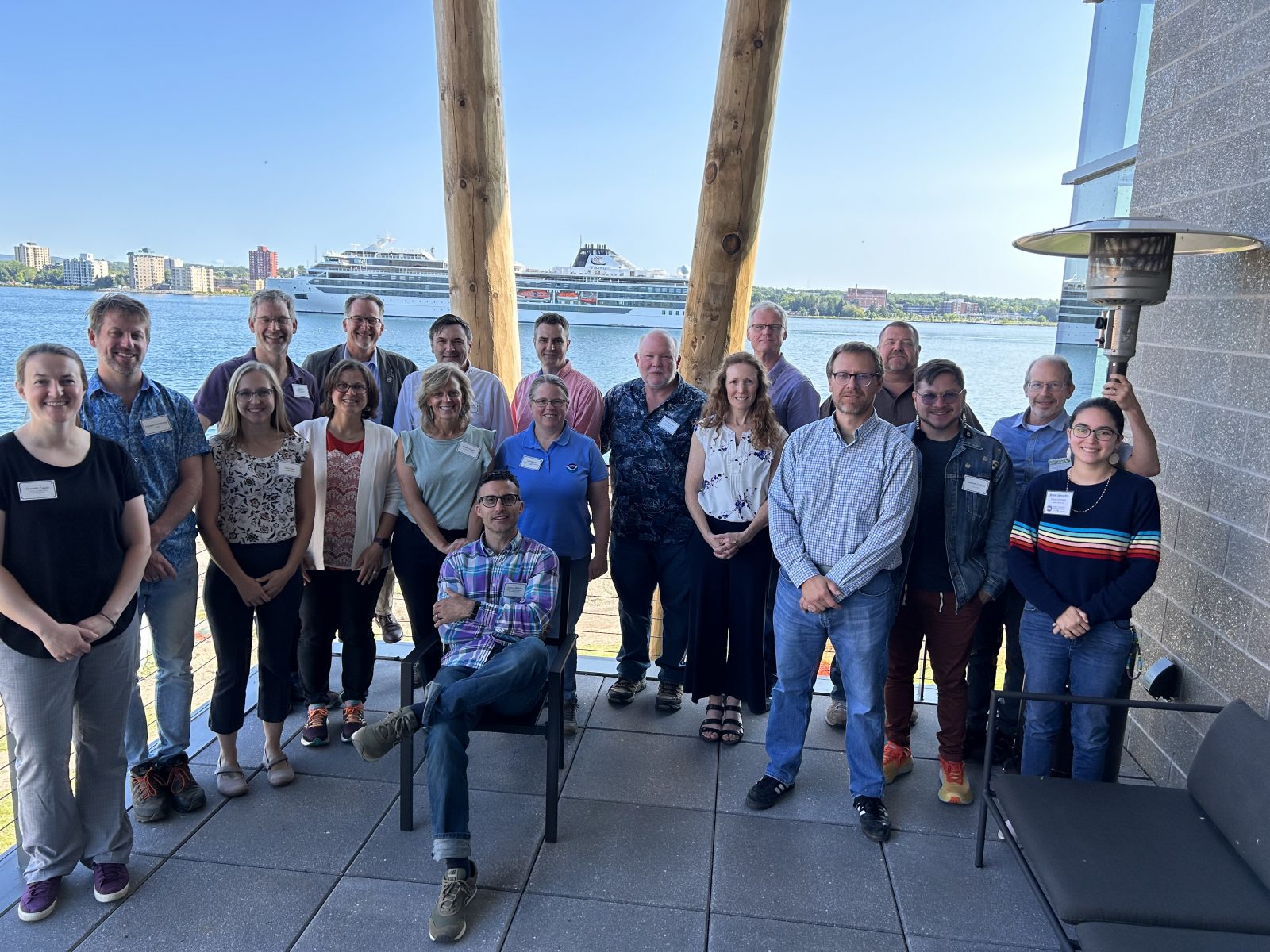Developing a Conceptual Framework and Vision for Coordinating Great Lakes Connecting Waters Research and Monitoring
 Dates: July 17-19, 2023
Dates: July 17-19, 2023
Steering Committee: Leads: Robin L. DeBruyne (U.S.G.S. Great Lakes Science Center); Lauren Fry (NOAA GLERL); Ashley Moerke, Lake Superior State University, Center for Freshwater Research and Education; Edward Roseman (U.S.G.S. Great Lakes Science Center)
CIGLR Research Theme: Protection & Restoration of Resources
Description & Goals: Our goal is to develop a conceptual framework and priorities for connecting waters science and monitoring that provides a communication network to share information and lessons learned from management actions and identify and fill information gaps.
Great Lakes connecting waters are the arteries of the Great Lakes. They include the St. Marys River connecting lakes Superior and Huron, Straits of Mackinac connecting lakes Michigan and Huron, St. Clair-Detroit River System connecting lakes Huron and Erie, Niagara River and Welland Canal connecting lakes Erie and Ontario, and the St. Lawrence River extending from Lake Ontario to the Gulf of St. Lawrence in the Atlantic Ocean.

Great Lakes Connecting Waters group photo. Photo Credit: Michael Twiss.
Great Lakes connecting waters are globally unique ecosystems. All are significant ecologically and economically valued systems because they are major sources of fisheries production, provide municipal and industrial water supplies, are transportation and industrial epicenters, possess Tribal and First Nations indigenous heritage, and are highly susceptible to catastrophic events and climate change influences, making them uniquely vulnerable ecosystems. Most are binational (except the Straits of Mackinac and Welland Canal), contain Areas of Concern, or suffer some level of anthropogenic disturbance and effects of invasive species. With some exceptions, connecting waters are not consistently featured in LAMPs, Cooperative Science and Monitoring Initiative activities, nor Great Lakes Fishery Commission lake committee’s strategic planning.
The Connecting Waters Summit will propose development of a collaborative network and leadership who will provide consistent representation by emphasizing connecting waters research, surveillance, and monitoring needs that promote water quality and ecological resilience. Through a coordinated communication and research collaborative, the framework will facilitate cross-basin development of ecological monitoring and surveillance programs, conservation and enhancement strategies to protect water quality, removal of contaminants and excess nutrients, development of green infrastructure, and efforts to reduce/eliminate harmful algal blooms. The connecting waters network will serve as an advocate for connecting waters stewardship by developing and carrying out education and outreach programs detailing the critical ecosystem services that connecting waters provide and how uniquely vulnerable these systems are to anthropogenic hazards including climate change.
The connecting waters framework will facilitate the Great Lakes Water Quality Agreement Lakewide Management Annex (Annex 2; https://binational.net/annexes/a2/) by contributing to achievement of the General and Specific Objectives to restore and maintain the chemical, physical, and biological integrity of the Waters of the Great Lakes. Assessment of the status of each Great Lake and connecting waters is needed to address environmental stressors that adversely affect the Waters of the Great Lakes which are best addressed on a lakewide scale through an ecosystem approach warranting an update of the Ecological Profiles. The connecting waters framework will aid Annex 2 by assembling, assessing, and reporting on existing scientific information concerning the state of the waters of each connecting water and future potential threats to water quality; identifying science priorities for each connecting water; identifying actions necessary to address priority threats to water quality and habitats; coordinating and standardizing assessments of connecting waters; and improving engagement and communication across the Great Lakes basin.
The need and usefulness of a collective impact collaborative for Great Lakes connecting waters is emphasized in two recent reports calling for expansion and enhancement of communication and collaboration within the Great Lakes. Our intention is to answer the call to action presented by Twiss et al.’s IJC report titled Monitoring Infrastructure and Activities of Great Lakes Connecting Waters: An Assessment and Recommendations by developing a coordinated long-term plan for connecting waters research, surveillance, and monitoring; establishing and building upon existing long-term monitoring programs; identifying targeted experimental research needs; and developing event-based monitoring within each waterway. Twiss et al. (2021) also emphasize the need for implementing real-time water quality monitoring networks and data access platforms in connecting waters, a major source of drinking water for many municipalities. Carl et al. (2021) provide similar suggestions for the broader Great Lakes basin in their report titled U.S. Geological Survey Great Lakes Science Forum – Summary of remaining data and science needs and next steps (USGS Report No. 2021-1096). Both reports emphasize empowering First Nations and Tribes to assist with data collection, monitoring, analyses, and incorporation of traditional ecological knowledge; improving environmental literacy and training future generations of scientists and managers about connecting waters; and developing routine communication and outreach about connecting waters ecology and management through scientific forums, public stakeholder interactions, and media. Development of the proposed collaborative network will help achieve these commitments through structured coordination and collaboration.
The management benefits and scientific outcomes of a connecting waters network are numerous. First and foremost is development of a formal communication/collaboration framework for Great Lakes connecting waters that sets in motion continuous improvement of collaboration across the basin. This includes the long-term planning that Twiss et al. (2021) and Carl et al. (2021) consider a major need. Second, updated connecting waters’ Ecological Profiles and a viability analysis, inventory, and application of assessment programs matched to management objectives for each connecting water and adjacent Great Lakes will be conducted to identify gaps in monitoring, research needs, and redundancies. Third, using information gleaned from the second outcome, conceptual models can be developed that synthesize interactions across trophic levels and water quality parameters to help identify information gaps, establish a common understanding of ecosystem structure and function, facilitate communication and outreach, and support the development of research hypotheses and emerging and evolving science needs. Lastly, network members will organize and facilitate workshops and scientific symposia featuring connecting waters topics at regional and international conferences and other forums, as well as participate in routine stakeholder meetings. Outcomes of the workshops and symposia will be made available via publications in special issues of journals, media outlets, and K-12 and college level curricula.
The Connecting Waters Summit will develop recommendations for building and coordinating partnerships and collaborations, facilitating connecting waters research and monitoring plans, and facilitating the development of a coordinated collective impact framework across and within connecting waters. This includes coordination with Lakewide Action and Management Plans, Areas of Concern programs, Great Lakes Fishery Commission lake committees, Great Lakes Commission, International Joint Commission, federal, state, provincial, tribal and First Nations, and the various stakeholders, managers, and scientists to develop a collective impact framework for Great Lakes connecting waters.
Summit Products: Products from the summit will include at least one peer-reviewed paper with associated Power-Point presentation to be used as a communication tool, and development of the connecting waters science network.
